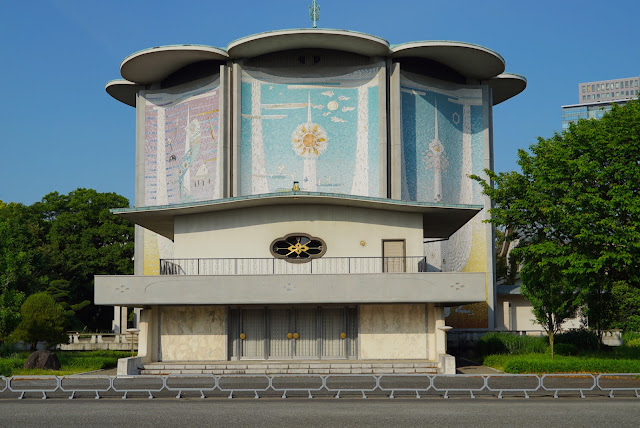Crepes of many kinds!
Lolita floor or Gothic and Punk floor?
So some people actually wear these kind of boots:
As an antidote, we next went to visit the Ota Memorial Museum of Art, which had an amazing exhibit of wood block prints by Hiroshige. Most of us are familiar with some of the classic images of the prints, like these:
But this exhibit featured some of the very first printings of the images; what was startling was the absolute vividness of the colors, which made the compositions really come alive. No photographs were allowed, and, in any case, they could not reproduce the effect of seeing the originals. It was an eye-opening exhibit.
Then we walked along Omotesando, a very high end shopping street, famous for its flashy modern buildings like that by Herzog and de Meuron for Prada. I don't know if anyone really buys much in these stores; I was entertained by the sight of t-shirt and shorts clad tourists entering the building and being greeted by the so elegantly clad store personnel.
Sunday shoppers, out in force, entering a funhouse mirrored shopping mall:

The Prada building:
Reflections of an adjacent building in the Prada windows:
Then it was a retreat from commerce again, this time to the Nezu Museum, a small and very elegantly designed museum of Japanese art. There were some amazing screen paintings and ancient bronzes and pottery. No photos allowed.
The museum also has a spectacular garden. It's a beautiful oasis in the middle of Tokyo.
The iris season was just about over:
There was a small bamboo grove:
We had our delicious green tea at a counter in a very stylish tea room overlooking the garden.
Continuing our pattern of alternating retail sights with art museums, we decided to finish the day with a visit to Shibuya, the true mecca of young people's shopping, and home of the famous crosswalk where all traffic stops and thousands of people cross the large intersection, going in every direction. It's an unforgettable spectacle.


Advertising and neon signs are everywhere:
And more strange architectural manifestations:
Omelettes, anyone?
I don't know what this is about:


























































